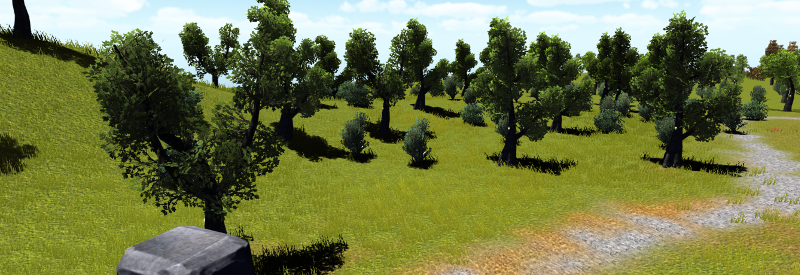
|
|
Outlook
|
While the results of the practical show the general possibilites of Virtual Reality museusm, specific improvements could be introduced by subsequent practicals or open-source collaboration. Future work could include the following:
- Automated simplification of objects
- Varying Level of Detail (LOD)
- Current generation of VR devices
- User comfort
Adaptive rescaling during runtime
To adapt to the varying computational power of each system, an adaptive resizing could be implemented to reduce the number of vertices with respect to this. This would allow scientific divisions to supply experienced users with higher resolutions for exhibits on a high-end computer, while exhibiting at a lower resolution on publicly available computers.
The underlying structure would require to access the structure of Unity's texture modeling though, to do all this at runtime.
Varying Level of Detail (LOD)
Varying Level of Detail (LOD) is already a common concept in current video games or renderings, and could significantly improve the quality of renderings of fine-grained structures like trees or wires, especially in far distances (compare forest scene). With the latest Unity versions, it is now possible to include LOD in the project, although with major difficulties. This is mostly due to the unknown scale of exhibits, which would have to be stored with varying resolution for each LOD. This explosive need in storage space was the main argument against LOD for the current implementation, but might be relevant with the topic of adaptive rescaling.
Current generation of VR devices
While the Oculus Rift DK2 allows for comparison with the final consumer version 1 (CV1), there are still some technical differences, especially regarding the resolution and driver update policy. By testing the virtual museum with a more recent device, some of the technical difficulties could be eliminated, e.g. the low resolution of the DK2.
User comfort
During the testing phase, varying degrees of VR sickness have been experienced both by the developers and test users. Since this is one of the most relevant topics in VR nowadays, future methods for reduction of motion sickness could be implemented.
Also, VR devices are lacking a concrete discretization of the sickness level. Various approaches to measure motion sickness in general have been proposed, the most common being FMS (Fast Motion sickness Scale) [19]. Future work could include a measure of FMS for VR applications as well.
|
|
|
Universität Heidelberg, 2016
|
|
|